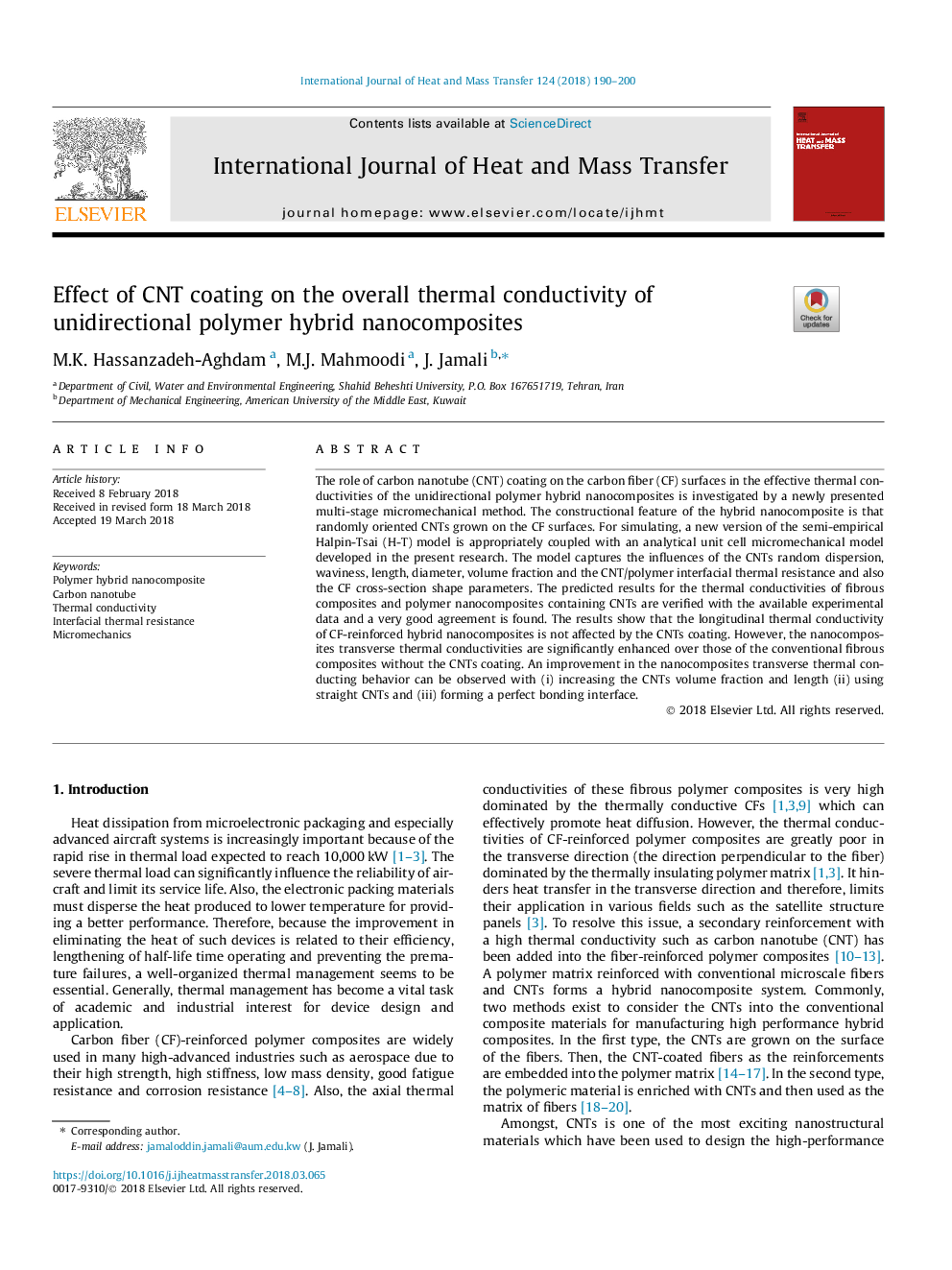| Article ID | Journal | Published Year | Pages | File Type |
|---|---|---|---|---|
| 7054154 | International Journal of Heat and Mass Transfer | 2018 | 11 Pages |
Abstract
The role of carbon nanotube (CNT) coating on the carbon fiber (CF) surfaces in the effective thermal conductivities of the unidirectional polymer hybrid nanocomposites is investigated by a newly presented multi-stage micromechanical method. The constructional feature of the hybrid nanocomposite is that randomly oriented CNTs grown on the CF surfaces. For simulating, a new version of the semi-empirical Halpin-Tsai (H-T) model is appropriately coupled with an analytical unit cell micromechanical model developed in the present research. The model captures the influences of the CNTs random dispersion, waviness, length, diameter, volume fraction and the CNT/polymer interfacial thermal resistance and also the CF cross-section shape parameters. The predicted results for the thermal conductivities of fibrous composites and polymer nanocomposites containing CNTs are verified with the available experimental data and a very good agreement is found. The results show that the longitudinal thermal conductivity of CF-reinforced hybrid nanocomposites is not affected by the CNTs coating. However, the nanocomposites transverse thermal conductivities are significantly enhanced over those of the conventional fibrous composites without the CNTs coating. An improvement in the nanocomposites transverse thermal conducting behavior can be observed with (i) increasing the CNTs volume fraction and length (ii) using straight CNTs and (iii) forming a perfect bonding interface.
Related Topics
Physical Sciences and Engineering
Chemical Engineering
Fluid Flow and Transfer Processes
Authors
M.K. Hassanzadeh-Aghdam, M.J. Mahmoodi, J. Jamali,
